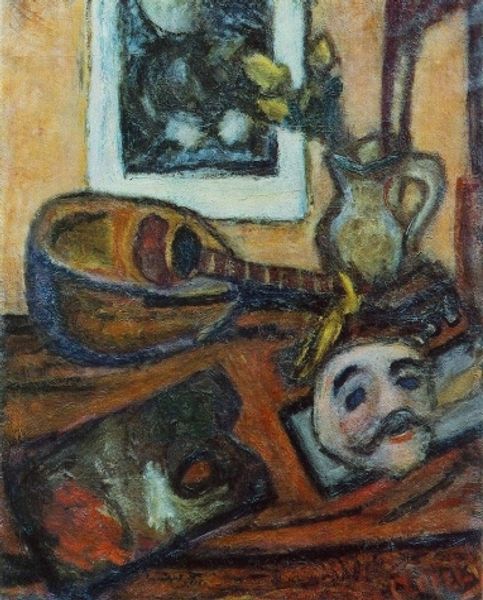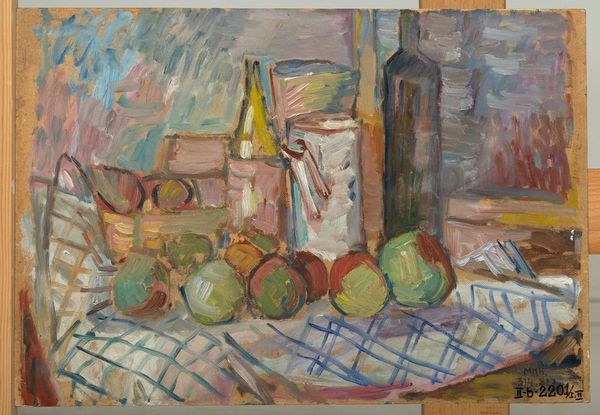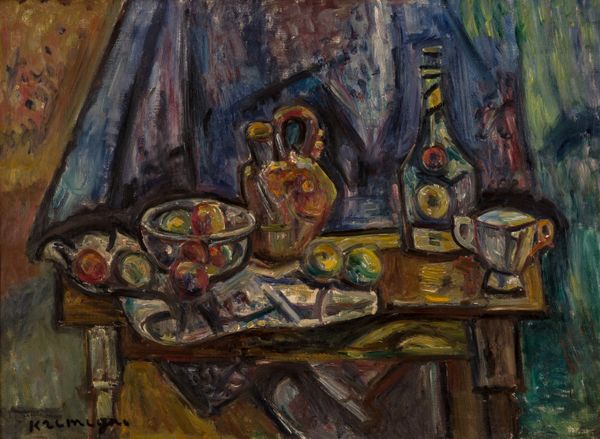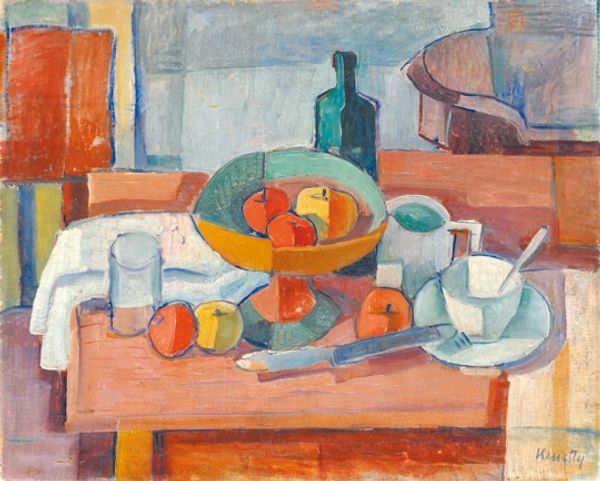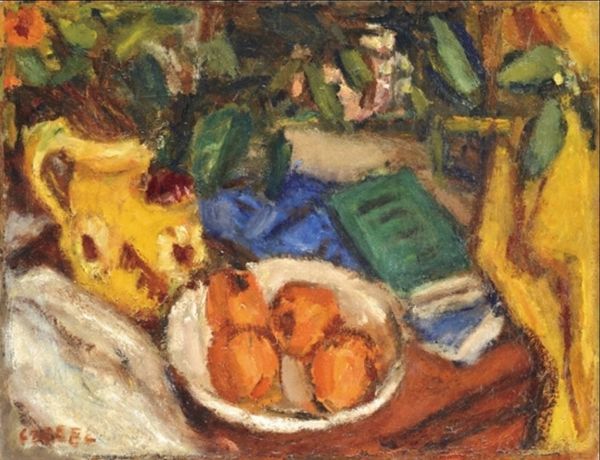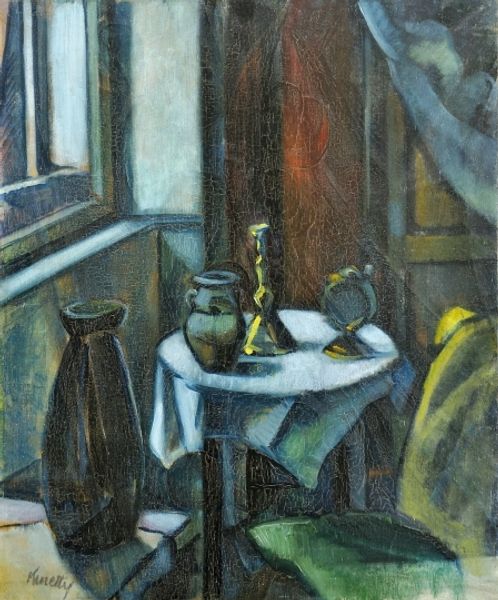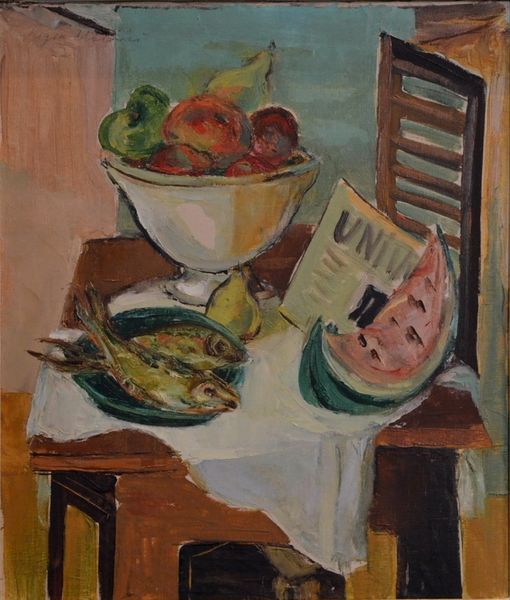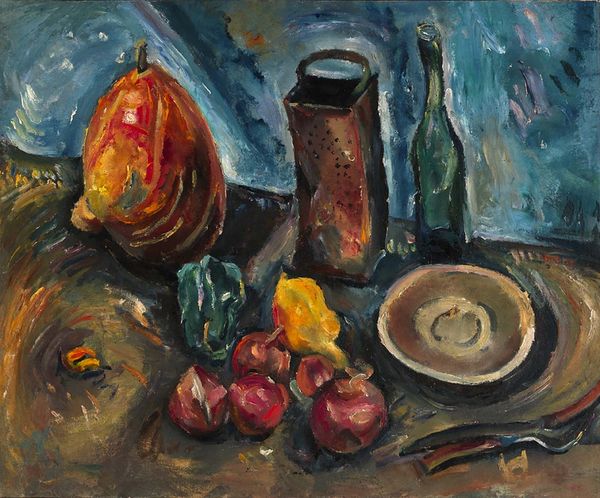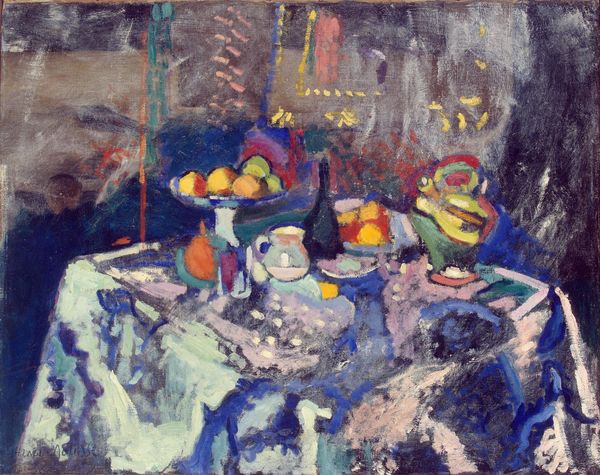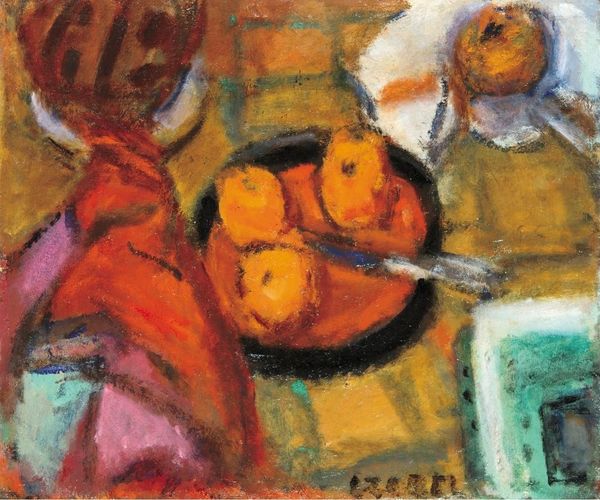
Copyright: Pinchus Kremegne,Fair Use
Editor: Here we have Pinchus Kremegne’s "Still Life with Basket, Jug and Fruits" from 1948. The heavy impasto and slightly muddied colors give it a really earthy, grounded feel. What’s your take on it? Curator: It's interesting to consider this through the lens of postwar scarcity. The thick application of oil paint—the impasto you mentioned—almost transforms everyday objects into precious, tangible assets. Consider the raw materials involved: linseed oil, pigments... Even the canvas itself represents resources. Does this materiality heighten our awareness of post-war realities? Editor: That's a compelling idea! So you're suggesting the painting isn't just *depicting* scarcity, but almost embodies it through the very physicality of its materials? Curator: Exactly. And look at the basket. Woven objects, humble craft traditions – Kremegne elevates these utilitarian items to the realm of fine art. How does that challenge the hierarchy of art versus craft, do you think? What sort of social and economic labor goes into creating these goods? Editor: It blurs the lines, doesn’t it? Makes you think about who gets to define “art” and what kind of labor and social capital counts towards it. It feels almost democratic, in a way. Curator: Precisely. By highlighting the material reality and inherent labor of even the simplest still life components, Kremegne prompts us to reassess value and question what is deemed worthy of aesthetic contemplation. Editor: I never thought about it like that, but seeing the raw materials themselves as part of the statement changes everything. Curator: Absolutely. Looking at art through this lens of production and materiality can really open up new avenues for interpretation.
Comments
No comments
Be the first to comment and join the conversation on the ultimate creative platform.


